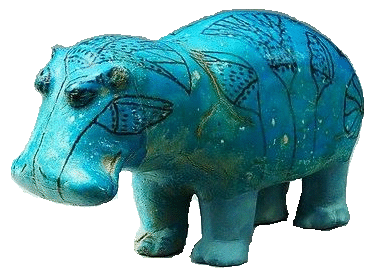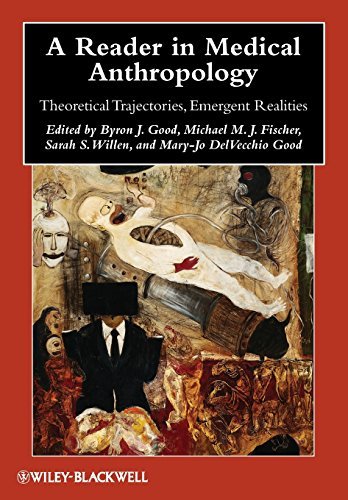
ウィキペディアで読む医療人類学
Medical Anthropology in Wikipedia in
reading in 30 minutes

★30
分で医療人類学を理解するためのもっとも有益な方法はウィキペディア(英語)の"Medical
anthropology"を紐解くことである。本ページの姉妹編に「3分でわかる医療人
類学」がある。
☆医学と人類学を架橋(ブリッジ)する学問を医療人類学(medical anthropology)と呼ぶ。より平凡には、医療人類学は、
「人間の健康と疾病、医療システム、生物文化的適応」を研究する学問である。それは、多次元的かつ生態学的な視点から人間を捉える。人類学および応用人類
学の中で最も高度に発展した分野の一つであり、文化や社会が保健や医療、関連する問題を中心に組織されたり、その影響を受けたりする方法を研究する社会文
化人類学の一分野で[も]ある。医療人類学」という用語は、1963年以来、人類学者による、保健、疾病、およびそれらに関連する看護/ケア実践の社会的
プロセスと文化的表象に関する実証的研究と理論的生産のためのラベルとして使用されてきた。さらにヨーロッパでは、「医療人類学」「保健人類学」「疾病人
類学」という用語も使用されており、「医療人類学」は19世紀のオランダ語「medische
anthropologie」の翻訳語でもあった。この用語は1940年代に保健と病気に関する哲学的研究を指すために一部の著者によって使われたという
経緯もある。
| Medical
anthropology studies "human health and disease, health care
systems,
and biocultural adaptation".[1] It views humans from multidimensional
and ecological perspectives.[2] It is one of the most highly developed
areas of anthropology and applied anthropology,[3] and is a subfield of
social and cultural anthropology that examines the ways in which
culture and society are organized around or influenced by issues of
health, health care and related issues. The term "medical anthropology" has been used since 1963 as a label for empirical research and theoretical production by anthropologists into the social processes and cultural representations of health, illness and the nursing/care practices associated with these.[4] Furthermore, in Europe the terms "anthropology of medicine", "anthropology of health" and "anthropology of illness" have also been used, and "medical anthropology", was also a translation of the 19th century Dutch term "medische anthropologie". This term was chosen by some authors during the 1940s to refer to philosophical studies on health and illness.[5] |
医療人類学は、「人間の健康と疾病、医療システム、生物文化的適応」を
研究する[1]。多次元的かつ生態学的な視点から人間を捉える[2]。人類学および応用人類学の中で最も高度に発展した分野の一つであり[3]、文化や社
会が保健や医療、関連する問題を中心に組織されたり、その影響を受けたりする方法を研究する社会文化人類学の一分野である。 「医療人類学」という用語は、1963年以来、人類学者による、保健、疾病、およびそれらに関連する看護/ケア実践の社会的プロセスと文化的表象に関する実 証的研究と理論的生産のためのラベルとして使用されている[4]。 さらにヨーロッパでは、「医療人類学」、「保健人類学」、「疾病人類学」という用語も使用されており、「医療人類学」は19世紀のオランダ語 「medische anthropologie」の翻訳でもあった。この用語は1940年代に、保健と病気に関する哲学的研究を指すために一部の著者によって選ばれた [5]。 |
| Historical background The relationship between anthropology, medicine and medical practice is well documented.[6] General anthropology occupied a notable position in the basic medical sciences (which correspond to those subjects commonly known as pre-clinical). However, medical education started to be restricted to the confines of the hospital as a consequence of the development of the clinical gaze and the confinement of patients in observational infirmaries.[7][8] The hegemony of hospital clinical education and of experimental methodologies suggested by Claude Bernard relegate the value of the practitioners' everyday experience, which was previously seen as a source of knowledge represented by the reports called medical geographies and medical topographies both based on ethnographic, demographic, statistical and sometimes epidemiological data. After the development of hospital clinical training the basic source of knowledge in medicine was experimental medicine in the hospital and laboratory, and these factors together meant that over time mostly doctors abandoned ethnography as a tool of knowledge. Most, not all because ethnography remained during a large part of the 20th century as a tool of knowledge in primary health care, rural medicine, and in international public health. The abandonment of ethnography by medicine happened when social anthropology adopted ethnography as one of the markers of its professional identity and started to depart from the initial project of general anthropology. The divergence of professional anthropology from medicine was never a complete split.[9] The relationships between the two disciplines remained constant during the 20th century, until the development of modern medical anthropology in the 1960s and 1970s. A book by Saillant & Genest describes development of medical anthropology as a field of study, and some of the main theoretical and intellectual actual debates.[10][11] Some popular topics that are covered by medical anthropology are mental health, sexual health, pregnancy and birth, aging, addiction, nutrition, disabilities, infectious disease, non-communicable diseases (NCDs), global epidemics and disaster management.[citation needed] |
歴史的背景 人類学、医学、医療実践の関係はよく知られている[6]。 一般的な人類学は、基礎医学(一般に前臨床と呼ばれる科目に相当)において重要な位置を占めていた。クロード・ベルナールによって提案された病院臨床教育 や実験的方法論の覇権は、それまでエスノグラファー、人口統計学、統計学、時には疫学的データに基づくメディカル・ジオグラフィーやメディカル・トポグラ フィーと呼ばれる報告書に代表される知識源とみなされていた開業医の日常経験の価値を後退させた。病院での臨床研修が発達してからは、医学における知識の 基本的な源泉は病院や実験室での実験医学であり、これらの要因が相まって、時間の経過とともに、ほとんどの医師が知識の道具としての民族誌を放棄するよう になった。20世紀の大部分は、プライマリーヘルスケア、農村医療、国際公衆衛生において、民族誌が知識の道具として残っていたからである。医学における 民族誌の放棄は、社会人類学が民族誌を専門家としてのアイデンティティの標識の一つとして採用し、一般人類学の当初のプロジェクトから逸脱し始めたときに 起こった。専門的な人類学と医学の乖離は、決して完全な分裂ではなかった[9]。1960年代から1970年代にかけて近代的な医療人類学が発展するま で、この2つの学問分野の関係は20世紀を通じて不変であった。SaillantとGenestによる著書は、研究分野としての医療人類学の発展と、主な 理論的・知的な実際の議論のいくつかを記述している[10][11]。 医療人類学が扱う人気のあるトピックは、メンタルヘルス、性の健康、妊娠と出産、老化、中毒、栄養、障害、感染症、非感染性疾患(NCDs)、世界的な伝 染病、災害管理である[要出典]。 |
| Medical sociology Peter Conrad notes that medical sociology studies some of the same phenomena as medical anthropology but argues that medical anthropology has different origins, originally studying medicine within non-western cultures and using different methodologies.[12]: 91–92 He argues that there was some convergence between the disciplines, as medical sociology started to adopt some of the methodologies of anthropology such as qualitative research and began to focus more on the patient, and medical anthropology started to focus on western medicine. He argued that more interdisciplinary communication could improve both disciplines.[12] |
医療社会学 ピーター・コンラッドは、医療社会学は医療人類学と同じ現象のいくつかを研究しているが、医療人類学は異なる起源を持ち、もともとは非西洋文化の中で医学 を研究し、異なる方法論を用いていたと主張している。彼は、より学際的なコミュニケーションが両分野を改善する可能性があると主張した。 |
| Popular medicine and medical
systems For much of the 20th century, the concept of popular medicine, or folk medicine, has been familiar to both doctors and anthropologists. Doctors, anthropologists, and medical anthropologists used these terms to describe the resources, other than the help of health professionals, which European or Latin American peasants used to resolve any health problems. The term was also used to describe the health practices of aborigines in different parts of the world, with particular emphasis on their ethnobotanical knowledge. This knowledge is fundamental for isolating alkaloids and active pharmacological principles. Furthermore, studying the rituals surrounding popular therapies served to challenge Western psychopathological categories, as well as the relationship in the West between science and religion. Doctors were not trying to turn popular medicine into an anthropological concept, rather they wanted to construct a scientifically based medical concept which they could use to establish the cultural limits of biomedicine.[13][14] Biomedicine is the application of natural sciences and biology to the diagnosis of a disease. Often in the Western culture, this is ethnomedicine. Examples of this practice can be found in medical archives and oral history projects.[15] The concept of folk medicine was taken up by professional anthropologists in the first half of the twentieth century to demarcate between magical practices, medicine and religion and to explore the role and the significance of popular healers and their self-medicating practices. For them, popular medicine was a specific cultural feature of some groups of humans which was distinct from the universal practices of biomedicine. If every culture had its own specific popular medicine based on its general cultural features, it would be possible to propose the existence of as many medical systems as there were cultures and, therefore, develop the comparative study of these systems. Those medical systems which showed none of the syncretic features of European popular medicine were called primitive or pretechnical medicine according to whether they referred to contemporary aboriginal cultures or to cultures predating Classical Greece. Those cultures with a documentary corpus, such as the Tibetan, traditional Chinese or Ayurvedic cultures, were sometimes called systematic medicines. The comparative study of medical systems is known as ethnomedicine, which is the way an illness or disease is treated in one's culture, or, if psychopathology is the object of study, ethnopsychiatry (Beneduce 2007, 2008), transcultural psychiatry (Bibeau, 1997) and anthropology of mental illness (Lézé, 2014).[16] Under this concept, medical systems would be seen as the specific product of each ethnic group's cultural history. Scientific biomedicine would become another medical system and therefore a cultural form that could be studied as such. This position, which originated in the cultural relativism maintained by cultural anthropology, allowed the debate with medicine and psychiatry to revolve around some fundamental questions: 1. The relative influence of genotypical and phenotypical factors in relation to personality and certain forms of pathology, especially psychiatric and psychosomatic pathologies. 2. The influence of culture on what a society considers to be normal, pathological or abnormal. 3. The verification in different cultures of the universality of the nosological categories of biomedicine and psychiatry. 4. The identification and description of diseases belonging to specific cultures that have not been previously described by clinical medicine. These are known as ethnic disorders and, more recently, as culture-bound syndromes, and include the evil eye and tarantism among European peasants, being possessed or in a state of trance in many cultures, and nervous anorexia, nerves and premenstrual syndrome in Western societies. Since the end of the 20th century, medical anthropologists have had a much more sophisticated understanding of the problem of cultural representations and social practices related to health, disease and medical care and attention.[17] These have been understood as being universal with very diverse local forms articulated in transactional processes. The link at the end of this page is included to offer a wide panorama of current positions in medical anthropology. |
民間療法と医療制度 20世紀の大半の間、民衆医学あるいは民間療法という概念は、医師にとっても人類学者にとってもなじみの深いものであった。医師、人類学者、医療人類学者 は、ヨーロッパやラテンアメリカの農民があらゆる保健上の問題を解決するために利用した、保健専門家の助け以外の資源を説明するためにこれらの用語を使用 した。この用語はまた、世界各地の原住民の保健習慣を表すのにも使われ、特に彼らの民族植物学的知識に重点が置かれていた。この知識は、アルカロイドや活 性薬理原理を単離するための基本である。さらに、民衆療法にまつわる儀式を研究することは、西洋の精神病理学的カテゴリーや、西洋における科学と宗教の関 係に異議を唱えることにもなった。医師たちは、民間療法を人類学的な概念に変えようとしたのではなく、科学的根拠に基づいた医学的概念を構築し、それを用 いて生物医学の文化的限界を確立しようとしたのである[13][14]。西洋文化ではしばしば、これが民族医学である。この実践例は、医療文書館やオーラ ル・ヒストリー・プロジェクトで見ることができる[15]。 民間療法という概念は、呪術的実践、医療、宗教の間を区分し、民衆の治療者とその自己治療実践の役割と意義を探求するために、20世紀前半に専門の人類学 者によって取り上げられた。彼らにとって大衆医療とは、一部の人間集団に特有の文化的特徴であり、普遍的な生物医学の実践とは異なるものであった。もしす べての文化が、その一般的な文化的特徴に基づいた独自の大衆医学を持っているとすれば、文化の数だけ医学体系が存在することになり、それらの比較研究を発 展させることができるだろう。ヨーロッパの民衆医学のようなシンクレティックな特徴を示さない医学体系は、現代の原住民文化を指すのか、古典ギリシア以前 の文化を指すのかによって、原始医学または前技術医学と呼ばれた。チベット文化、伝統的な中国文化、アーユルヴェーダ文化など、文献資料のある文化は、体 系的な医学と呼ばれることもあった。医療システムの比較研究は、民族医学として知られており、病気や疾患がある文化において治療される方法であり、精神病 理学が研究対象であれば、民族精神医学(Beneduce 2007, 2008)、トランスカルチュラル精神医学(Bibeau, 1997)、精神病の人類学(Lézé, 2014)である[16]。 この概念のもとでは、医療制度は各民族の文化的歴史の具体的な産物とみなされることになる。科学的な生物医学はもうひとつの医療システムとなり、それゆえ そのようなものとして研究されうる文化的形態となる。文化人類学が維持する文化相対主義に端を発するこの立場は、医学と精神医学との論争を、いくつかの基 本的な問題を中心に展開することを可能にした: 1. 1.人格とある種の病理、特に精神医学的・心身医学的病理との関連において、遺伝型要因と表現型要因の相対的影響力。 2. ある社会が何を正常、病的、異常とみなすかにおける文化の影響。 3. 生物医学と精神医学の病名分類の普遍性の異なる文化における検証。 4. 臨床医学ではこれまで説明されてこなかった特定の文化に属する疾患を特定し、説明すること。これらはエスニック障害として、また最近では文化結合症候群と して知られており、ヨーロッパの農民における邪眼やタランティズム、多くの文化における憑依状態やトランス状態、西洋社会における神経性食欲不振症、神経 症、月経前症候群などが含まれる。 20世紀末以降、医療人類学者は、保健、疾病、医療と注意に関連する文化的表象と社会的実践の問題について、より洗練された理解を持つようになった。この ページ末尾のリンクは、医療人類学における現在の立場を幅広く俯瞰するためのものである。 |
| Applied medical anthropology This section does not cite any sources. Please help improve this section by adding citations to reliable sources. Unsourced material may be challenged and removed. (October 2019) (Learn how and when to remove this message) In the United States, Canada, Mexico, and Brazil, collaboration between anthropology and medicine was initially concerned with implementing community health programs among ethnic and cultural minorities and with the qualitative and ethnographic evaluation of health institutions (hospitals and mental hospitals) and primary care services. Regarding the community health programs, the intention was to resolve the problems of establishing these services for a complex mosaic of ethnic groups. The ethnographic evaluation involved analyzing the interclass conflicts within the institutions which had an undesirable effect on their administrative reorganization and their institutional objectives, particularly those conflicts among the doctors, nurses, auxiliary staff and administrative staff. The ethnographic reports show that interclass crises directly affected therapeutic criteria and care of the ill. They also contributed new methodological criteria for evaluating the new institutions resulting from the reforms as well as experimental care techniques such as therapeutic communities. The ethnographic evidence supported the criticisms of the institutional custodialism and contributed decisively to policies of deinstitutionalizing psychiatric and social care in general and led to in some countries such as Italy, a rethink of the guidelines on education and promoting health. The empirical answers to these questions led to the anthropologists being involved in many areas. These include: developing international and community health programs in developing countries; evaluating the influence of social and cultural variables in the epidemiology of certain forms of psychiatric pathology (transcultural psychiatry); studying cultural resistance to innovation in therapeutic and care practices; analysing healing practices toward immigrants; and studying traditional healers, folk healers and empirical midwives who may be reinvented as health workers (the so-called barefoot doctors). Also, since the 1960s, biomedicine in developed countries has been faced by a series of problems which stipulate inspection of predisposing social or cultural factors, which have been reduced to variables in quantitative protocols and subordinated to causal biological or genetic interpretations. Among these the following are of particular note: a) The transition between a dominant system designed for acute infectious pathology to a system designed for chronic degenerative pathology without any specific etiological therapy. b) The emergence of the need to develop long term treatment mechanisms and strategies, as opposed to incisive therapeutic treatments. c) The influence of concepts such as quality of life in relation to classic biomedical therapeutic criteria. Added to these are the problems associated with implementing community health mechanisms. These problems are perceived initially as tools for fighting against unequal access to health services. However, once a comprehensive service is available to the public, new problems emerge from ethnic, cultural or religious differences, or from differences between age groups, genders or social classes. If implementing community care mechanisms gives rise to one set of problems, then a whole new set of problems also arises when these same mechanisms are dismantled and the responsibilities which they once assumed are placed back on the shoulders of individual members of society. In all these fields, local and qualitative ethnographic research is indispensable for understanding the way patients and their social networks incorporate knowledge on health and illness when their experience is nuanced by complex cultural influences. These influences result from the nature of social relations in advanced societies and from the influence of social communication media, especially audiovisual media and advertising. |
応用医療人類学 このセクションでは出典を引用していない。信頼できる情報源への引用を追加することで、このセクションの改善にご協力いただきたい。出典のないものは異議 申し立てがなされ、削除されることがある。(2019年10月)(このメッセージを削除する方法とタイミングを学ぶ) 米国、カナダ、メキシコ、ブラジルでは、人類学と医学の協力は当初、民族的・文化的マイノリティの間での地域保健プログラムの実施や、保健機関(病院や精 神病院)やプライマリケアサービスの質的・エスノグラファー的評価に関するものであった。地域保健プログラムについては、複雑なモザイク状の民族グループ に対するサービス確立の問題を解決することが意図された。エスノグラファーによる評価では、医療機関内の階級間対立を分析した。階級間対立は、医療機関の 行政再編成や制度目的に好ましくない影響を及ぼし、特に医師、看護師、補助スタッフ、事務スタッフ間の対立が顕著であった。エスノグラファーによる報告 は、クラス間の危機が治療基準や病人のケアに直接影響を与えたことを示している。また、改革の結果生まれた新しい制度や、治療共同体のような実験的なケア 技術を評価するための、新しい方法論的基準にも貢献した。 エスノグラファーによる証拠は、施設収容主義に対する批判を支持し、精神医療と社会的ケア全般の脱施設化政策に決定的な貢献をした。 これらの疑問に対する実証的な答えから、人類学者は多くの分野に関わるようになった。発展途上国における国際保健プログラムや地域保健プログラムの開発、 ある種の精神医学的病態の疫学における社会的・文化的変数の影響の評価(トランスカルチュラル精神医学)、治療やケアの実践における革新に対する文化的抵 抗の研究、移民に対する癒しの実践の分析、保健ワーカー(いわゆる裸足の医者)として再発明される可能性のある伝統的な治療者、民間治療者、経験的助産師 の研究などである。 また、1960年代以降、先進国の生物医学は、素因となる社会的・文化的要因の検査を規定する一連の問題に直面してきた。これらの要因は、定量的プロトコ ルの変数に還元され、因果関係のある生物学的・遺伝学的解釈に従属させられてきた。これらのうち、特に注目すべきは次のようなものである: a) 急性の感染性病態を対象とした支配的なシステムから、慢性変性病態を対象としたシステムへの移行。 b) 鋭い治療とは対照的に、長期的な治療メカニズムや戦略を開発する必要性の出現。 c)古典的な生物医学的治療基準に対するQOL(生活の質)などの概念の影響。 これらに加えて、地域保健機構の実施に伴う問題がある。これらの問題は、当初は保健サービスへの不平等なアクセスと闘うための手段として認識されている。 しかし、ひとたび包括的なサービスが一般市民にも提供されるようになると、民族的、文化的、宗教的な違いや、年齢層、性別、社会階層間の違いから、新たな 問題が生じてくる。 コミュニティ・ケアの仕組みを導入することで、ある種の問題が発生するのであれば、同じ仕組みが解体され、かつて担っていた責任が個々の社会構成員の肩に 再びかかるようになったときにも、まったく新しい問題が発生する。 これらすべての分野において、患者とその社会的ネットワークが、複雑な文化的影響によって微妙に変化するときに、保健と病気に関する知識をどのように取り 込んでいくかを理解するためには、ローカルで質的なエスノグラファー研究が不可欠である。これらの影響は、先進社会における社会関係の性質や、社会的コ ミュニケーションメディア、特に視聴覚メディアや広告の影響から生じる。 |
| Fields As medical anthropology has not standardised, consistent fields have not been established.[citation needed] In general, we may consider the following six basic fields: the development of systems of medical knowledge and medical care the patient-physician relationship the integration of alternative medical systems in culturally diverse environments the interaction of social, environmental and biological factors which influence health and illness both in the individual and the community as a whole the critical analysis of interaction between psychiatric services and migrant populations the impact of biomedicine and biomedical technologies in non-Western settings Other subjects that have become central to the medical anthropology worldwide are violence and social suffering[18] as well as other issues that involve physical and psychological harm and suffering that are not a result of illness. On the other hand, there are fields that intersect with medical anthropology in terms of research methodology and theoretical production, such as cultural psychiatry and transcultural psychiatry or ethnopsychiatry. |
分野 医療人類学は標準化されていないため、一貫した分野は確立されていない[要出典]。一般的には、以下の6つの基本分野が考えられる: 医学知識と医療のシステムの発展 患者と医師の関係 文化的に多様な環境における代替医療システムの統合 個人と地域社会全体の保健と疾病に影響を与える社会的、環境的、生物学的要因の相互作用。 精神医療サービスと移民集団との相互作用の批判的分析 非西洋環境における生物医学と生物医学技術の影響 その他、暴力や社会的苦痛[18]など、病気の結果ではない自然人類学的な危害や苦痛を伴う問題も、世界の医療人類学の中心的なテーマとなっている。その 一方で、文化精神医学やトランスカルチュラル精神医学、あるいはエスノプシアトリーのように、研究方法論や理論的生産の点で医療人類学と交差する分野もあ る。 |
| Training All medical anthropologists are trained in anthropology as their main discipline. Many come from the health professions such as medicine or nursing, whereas others come from the other backgrounds such as psychology, social work, social education or sociology. Cultural and transcultural psychiatrists are trained as anthropologists and, naturally, psychiatric clinicians. Training in medical anthropology is normally acquired at a master's (M.A. or M.Sc.) and doctoral level. A fairly comprehensive account of different postgraduate training courses in different countries can be found on the website of the Society of Medical Anthropology of the American Anthropological Association.[19] |
トレーニング 医療人類学者は皆、人類学を主な学問として訓練を受けている。その多くは、医学や看護学などの保健医療専門職の出身であるが、心理学、ソーシャルワーク、 社会教育学、社会学など、その他のバックグラウンドの出身者もいる。文化精神科医やトランスカルチュラル精神科医は、人類学者として訓練を受けており、当 然ながら精神科臨床医でもある。医療人類学の訓練は通常、修士課程(M.A.またはM.S.)と博士課程で行われる。各国の異なる大学院の訓練コースにつ いては、アメリカ人類学会の医療人類学会のウェブサイトにかなり包括的な説明がある[19]。 |
| Biological anthropology Critical medical anthropology Cultural ecology Culture-bound syndrome Disability anthropology Ecological anthropology Epidemiological transition Ethnomedicine Medical sociology William Abel Caudill |
生物人類学 批判的医療人類学 文化生態学 文化結合症候群 障害人類学 生態人類学 疫学的変遷 民族医学 医療社会学 ウィリアム・エーベル・コーディル |
| Further reading The following books present a global panorama on international medical anthropology, and can be useful as handbooks for beginners, students interested or for people who need a general text on this topic. Albretch GL, Fitzpatrick R Scrimshaw S, (2000) Handbook of Social Studies in Health and Medicine. London: Sage. Anderson, Robert (1996) Magic, Science and Health. The Aims and the Achievements of Medical Anthropology. Fort Worth, Harcourt Brace. Baer, Hans; Singer, Merrill; & Susser, Ida (2003)Medical Anthropology and the World System. Westport, CT: Praeger. Bibeau, Gilles (1997), "Cultural Psychiatry in a Creolizing World. Questions for a New Research Agenda", Transcultural Psychiatry, 34-1: 9–41. Brown PJ, ed.(1998) Understanding and Applying Medical Anthropology. Mountain View. Comelles, Josep M.; Dongen, Els van (eds.) (2002). Themes in Medical Anthropology. Perugia: Fondazione Angelo Celli Argo. Dongen, Els; Comelles, Josep M. (2001). Medical Anthropology and Anthropology. Perugia: Fondazione Angelo Celli Argo. Ember, Carol R.; Ember, Melvin, eds. (2004), Encyclopedia of Medical Anthropology: Health and Illness in the World's Cultures, New York: Kluwer Academic/Plenum Publishers, ISBN 0306477548 Farmer, Paul (1999) Infections and Inequalities: The Modern Plagues. Berkeley, University of California Press. Farmer, Paul (2003) Pathologies of Power: Health, Human Rights, and the New War on the Poor. Berkeley, University of California Press. Geest, Sjaak van der; Rienks, Ari (1998) The Art of Medical Anthropology. Readings. Amsterdam, Het Spinhuis. Universiteit van Amsterdam. Good, Byron, Michael M. J. Fischer, Sarah S. Willen, Mary-Jo DelVecchio Good, Eds. (2010) A Reader in Medical Anthropology: Theoretical Trajectories, Emergent Realities. Malden, MA: Wiley-Blackwell. Gray, A y Seale, C (eds.) (2001) Health and disease: a reader. Buckingham-Philadelphia, PA: Open University Press. Hahn, Robert A. (1995) Sickness and healing : an anthropological perspective. New Haven: Yale University Press. Hahn, Robert A. and Marcia Inhorn (eds.) (2010) Anthropology and Public Health, Second Edition: Bridging Differences in Culture and Society.Oxford University Press Helman, Cecil (1994) Culture Health and Illness. An Introduction for Health Professionals. London: Butterworth-Heinemann (new Fifth ed.). Janzen JM (2002) The Social Fabric of Health. An Introduction to Medical Anthropology, New York: McGraw-Hill. Johnson, Thomas; Sargent, C. (comps.) (1992), Medical Anthropology. Contemporary Theory and Method (reedition as Sargent i Johnson, 1996). Westport, Praeger. Landy, David (editor) Disease, and Healing: Studies in Medical Anthropology. New York: Macmillan. Lock, M & Nguyen, Vinh-Kim (2010) An Anthropology of Biomedicine, Wiley-Blackwell. ISBN 9781405110723 Loustaunan MO, Sobo EJ. (1997) The Cultural Context of Health, Illness and Medicine. Westport, Conn.: Bergin & Garvey. Nichter, Mark. (2008) 'Global health : why cultural perceptions, social representations, and biopolitics matter' Tucson: The University of Arizona Press. Pool, R and Geissler, W. (2005). Medical Anthropology. Buckingham: Open University Press. Samson C. (1999) Health Studies. A critical and Cross-Cultural Reader. Oxford, Blackwell. Singer, Merrill and Baer, Hans (2007) Introducing Medical Anthropology: A Discipline in Action. Lanham, AltaMira Press. Trevathan, W, Smith, EO, McKenna JJ (1999) Evolutionary Medicine: an interpretation in evolutionary perspective. Oxford University Press Trevathan, W, Smith, EO, McKenna J (2007) Evolutionary Medicine and Health: New Perspectives. Oxford University Press. Wiley, AS (2008) Medical anthropology: a biocultural approach. University of Southern California |
さらに読む 以下の書籍は、国際的な医療人類学のグローバルなパノラマを提示しており、初心者や興味のある学生、あるいはこのトピックに関する一般的なテキストを必要 とする人々のためのハンドブックとして有用である。 Albretch GL, Fitzpatrick R Scrimshaw S, (2000) Handbook of Social Studies in Health and Medicine. ロンドン:セージ。 Anderson, Robert (1996) 呪術、科学、保健。The Aims and the Achievements of Medical Anthropology. Fort Worth, Harcourt Brace. Baer, Hans; Singer, Merrill; & Susser, Ida (2003)Medical Anthropology and the World System. Westport, CT: Praeger. Bibeau, Gilles (1997), "Cultural Psychiatry in a Creolizing World. Questions for a New Research Agenda」, Transcultural Psychiatry, 34-1: 9-41. Brown PJ, ed.(1998) Understanding and Applying Medical Anthropology. Mountain View. Comelles, Josep M.; Dongen, Els van (eds.) (2002). Themes in Medical Anthropology. ペルージャ: Fondazione Angelo Celli Argo. Dongen, Els; Comelles, Josep M. (2001). Medical Anthropology and Anthropology. ペルージャ: Fondazione Angelo Celli Argo. Ember, Carol R.; Ember, Melvin, eds. (2004), Encyclopedia of Medical Anthropology: Health and Illness in the World's Cultures, New York: Kluwer Academic/Plenum Publishers, ISBN 0306477548 Farmer, Paul (1999) Infections and Inequalities: The Modern Plagues. Berkeley, University of California Press. Farmer, Paul (2003) Pathologies of Power: Health, Human Rights, and the New War on the Poor. Berkeley, University of California Press. Geest, Sjaak van der; Rienks, Ari (1998) The Art of Medical Anthropology. Readings. Amsterdam, Het Spinhuis. Universiteit van Amsterdam. Good, Byron, Michael M. J. Fischer, Sarah S. Willen, Mary-Jo DelVecchio Good, Eds. (2010) A Reader in Medical Anthropology: Theoretical Trajectories, Emergent Realities. Malden, MA: Wiley-Blackwell. Gray, A y Seale, C (eds.) (2001) Health and disease: a reader. Buckingham-Philadelphia, PA: Open University Press. Hahn, Robert A. (1995) Sickness and healing : an anthropological perspective. New Haven: Yale University Press. Hahn, Robert A. and Marcia Inhorn (eds.) (2010) Anthropology and Public Health, Second Edition: オックスフォード大学出版局。 Helman, Cecil (1994) Culture Health and Illness. An Introduction for Health Professionals. London: Butterworth-Heinemann (new Fifth ed.). Janzen JM (2002) The Social Fabric of Health. An Introduction to Medical Anthropology, New York: McGraw-Hill. Johnson, Thomas; Sargent, C. (comps.) (1992), Medical Anthropology. Contemporary Theory and Method (Sargent i Johnson, 1996として再版)。Westport, Praeger. Landy, David (editor) Disease, and Healing: Studies in Medical Anthropology. ニューヨーク: マクミラン。 Lock, M & Nguyen, Vinh-Kim (2010) An Anthropology of Biomedicine, Wiley-Blackwell. ISBN 97841405110723 Loustaunan MO, Sobo EJ. (1997) The Cultural Context of Health, Illness and Medicine. Westport, Conn.: Bergin & Garvey. Nichter, Mark. (2008) 'Global health : why cultural perceptions, social representations, and biopolitics matter' Tucson: The University of Arizona Press. Pool, R and Geissler, W. (2005). 医療人類学。バッキンガム: Open University Press. Samson C. (1999) Health Studies. A critical and Cross-Cultural Reader. Oxford, Blackwell. Singer, Merrill and Baer, Hans (2007) Introducing Medical Anthropology: A Discipline in Action. Lanham, AltaMira Press. Trevathan, W, Smith, EO, McKenna JJ (1999) Evolutionary Medicine: an interpretation in evolutionary perspective. オックスフォード大学出版局 Trevathan, W, Smith, EO, McKenna JJ (2007) Evolutionary Medicine and Health: New Perspectives. オックスフォード大学出版局。 Wiley, AS (2008) Medical anthropology: a biocultural approach. 南カリフォルニア大学 |
| https://en.wikipedia.org/wiki/Medical_anthropology |
★クレジット:(旧クレジット)「30分でわかる医療人類学」(現在のクレジット)「ウィキペディアで読む医療人類学」
☆A reader in medical anthropology : theoretical trajectories, emergent realities / edited by Byron J. Good ... [et al.], : pbk.. - Chichester : Wiley-Blackwell , 2010. - (Blackwell anthologies in social and cultural anthropology ; 14),

Table of Contents
Acknowledgments ix
About the Editors xiii
Introduction 1
Part I Antecedents 7
Introduction 9
1 Massage in Melanesia 15
W. H. R. Rivers
2 The Notion of Witchcraft Explains Unfortunate Events 18
E. E. Evans-Pritchard
3 Muchona the Hornet, Interpreter of Religion 26
Victor Turner
4 The Ojibwa Self and Its Behavioral Environment 38
Irving A. Hallowell
5 The Charity Physician 47
Rudolf Virchow
6 The Role of Beliefs and Customs in Sanitation Programs 50
Benjamin Paul
7 Introduction to Asian Medical Systems 55
Charles Leslie
8 Medical Anthropology and the Problem of Belief 64
Byron J. Good
Part II Illness and Narrative, Body and Experience 77
Introduction 79
9 Medicine’s Symbolic Reality: On a Central Problem in the Philosophy of Medicine 85
Arthur M. Kleinman
10 Elements of Charismatic Persuasion and Healing 91
Thomas J. Csordas
11 The Thickness of Being: Intentional Worlds, Strategies of Identity, and Experience Among Schizophrenics 108
Ellen Corin
12 The Concept of Therapeutic ‘Emplotment’ 121
Cheryl Mattingly
13 Myths/Histories/Lives 137
Michael Jackson
14 The State Construction of Affect: Political Ethos and Mental Health Among Salvadoran Refugees 143
Janis Hunter Jenkins
15 Struggling Along: The Possibilities for Experience among the Homeless Mentally Ill 160
Robert Desjarlais
Part III Governmentalities and Biological Citizenship 175
Introduction 177
16 Dreaming of Psychiatric Citizenship: A Case Study of Supermax Confinement 181
Lorna A. Rhodes
17 Biological Citizenship: The Science and Politics of Chernobyl-Exposed Populations 199
Adriana Petryna
18 Human Pharmakon: Symptoms, Technologies, Subjectivities 213
João Biehl
19 The Figure of the Abducted Woman: The Citizen as Sexed 232
Veena Das
20 Where Ethics and Politics Meet: The Violence of Humanitarianism in France 245
Miriam Ticktin
Part IV The Biotechnical Embrace 263
Introduction 265
21 The Medical Imaginary and the Biotechnical Embrace: Subjective Experiences of Clinical Scientists and Patients 272
Mary-Jo DelVecchio Good
22 Where It Hurts: Indian Material for an Ethics of Organ Transplantation 284
Lawrence Cohen
23 ‘‘Robin Hood’’ of Techno-Turkey or Organ Trafficking in the State of Ethical Beings 300
Aslihan Sanal
24 Quest for Conception: Gender, Infertility, and Egyptian Medical Traditions 319
Marcia C. Inhorn
25 AIDS in 2006: Moving toward One World, One Hope? 327
Jim Yong Kim and Paul Farmer
Part V Biosciences, Biotechnologies 331
Introduction 333
26 Dr. Judah Folkman’s Decalogue and Network Analysis 339
Michael M. J. Fischer
27 Beyond Nature and Culture: Modes of Reasoning in the Age of Molecular Biology and Medicine 345
Hans-Jörg Rheinberger
28 Immortality, In Vitro: A History of the HeLa Cell Line 353
Hannah Landecker
29 A Digital Image of the Category of the Person 367
Joseph Dumit
30 Experimental Values: Indian Clinical Trials and Surplus Health 377
Kaushik Sunder Rajan
Part VI Global Health, Global Medicine 389
Introduction 391
31 Medical Anthropology and International Health Planning 394
George M. Foster
32 Anthropology and Global Health 405
Craig R. Janes and Kitty K. Corbett
33 Mot Luuk Problems in Northeast Thailand: Why Women’s Own Health Concerns Matter as Much as Disease Rates 422
Pimpawun Boonmongkon, Mark Nichter, and Jen Pylypa
34 The New Malaise: Medical Ethics and Social Rights in the Global Era 437
Paul Farmer
35 Humanitarianism as a Politics of Life 452
Didier Fassin
Part VII Postcolonial Disorders 467
Introduction 469
36 Amuk in Java: Madness and Violence in Indonesian Politics 473
Byron J. Good and Mary-Jo DelVecchio Good
37 The Political Economy of ‘Trauma’ in Haiti in the Democratic Era of Insecurity 481
Erica James
38 Contract of Mutual (In)Difference: Governance and the Humanitarian Apparatus in Contemporary Albania and Kosovo 496
Mariella Pandolfi
39 Darfur through a Shoah Lens: Sudanese Asylum Seekers, Unruly
Biopolitical Dramas, and the Politics of Humanitarian Compassion in
Israel 505
Sarah S. Willen
40 The Elegiac Addict: History, Chronicity, and the Melancholic Subject 522
Angela Garcia
Index 540
☆
リ ンク
文 献
そ の他の情報
cc
Copyleft, CC, Mitzub'ixi Quq Chi'j, 1996-2099
☆
 ☆
☆